Top Trend: Fermented Foods PL
Top Trend: Fermented Foods PL

Pandemic lockdowns saw a surge in home bakers experimenting with sourdough, and their countertop cultures have served as an entré for fermentation of all sorts. From kombucha and kimchi to kefir and kvass, customers are looking to fermented foods to satisfy their cravings for adventurous flavours and authentic cultural experiences, not to mention the reported health boost that those good microbes can offer. In fact, The global fermented foods and beverages market is set to witness a growth rate of 5.6% between 2022 and 2032, according to Future Market Insights (25 July 2022). And both Datassential and Technomic highlighted fermented foods as trends to watch for 2023.
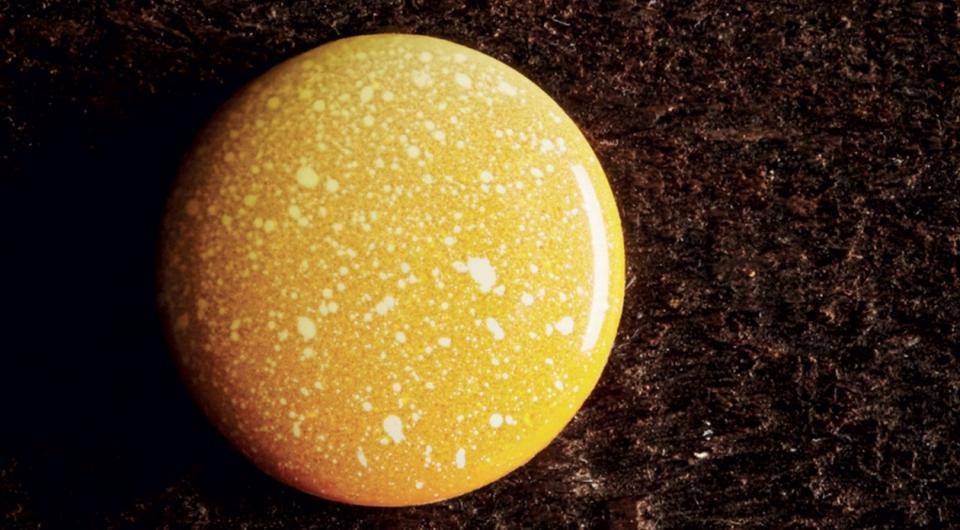
Chocolate x Beer
What better way to explore fermentation than by combining two beloved fermented items? Belgian beer and Belgian chocolate unite in this unique bonbon from Chef Philippe Vancayseele, who notes: “Callebaut is Belgian heritage. And so is Belgian beer. It’s a perfect match."

A study published in the Journal of Nutrition noted that foods with higher microbial concentrations are associated with modest health improvements. While chocolate doesn’t provide the gut health-enhancing benefits of the live and active cultures found in foods like yoghurt, for example, many of our favourite cacao products undergo a process of fermentation which is crucial to the development of chocolate flavour, aroma, and overall quality. And even if fermented foods do not meet standards for being “probiotic", the byproducts of fermentation can still offer possible health benefits, and fermentation may also produce beneficial prebiotic fibres (US News, "Myth vs. Fact: Fermented Foods" 3/20/2023).
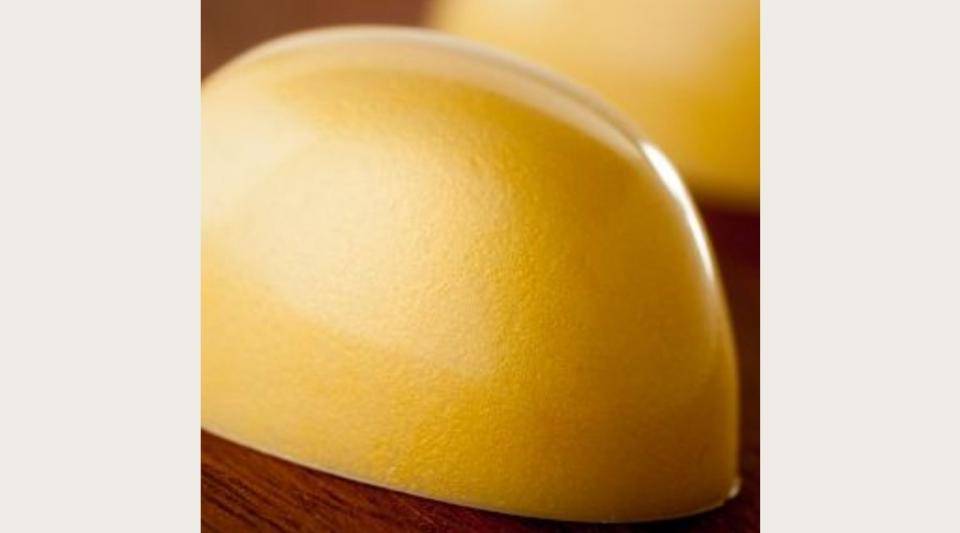
Yoghurt Loves Vinegar
Want to lean into the fermented foods trend? This ‘fermentation’ moulded chocolate from Chef Josep Ribe of Chocolate Academy™ Spain has a double-layered filling consisting of a Modena balsamic vinegar reduction with a creamy yoghurt ganache on top.
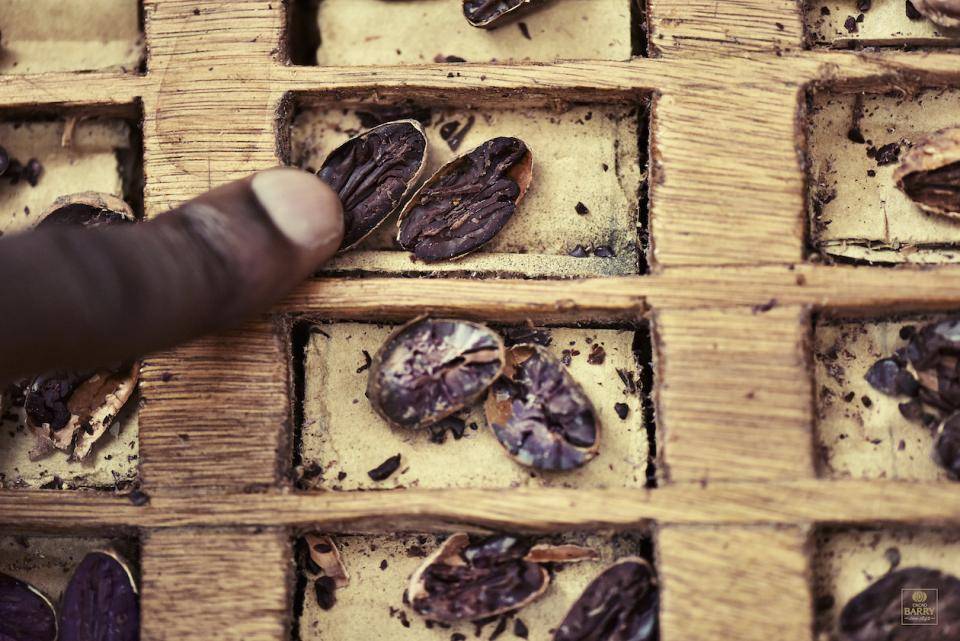
Splitting the cocoa beans allows experts to determine the level of fermentation and, therefore, the quality of the bean
Fermentation in the Chocolate Making Process
Fermentation is a crucial part of cacao’s journey from the tree to your menu. The fermentation process is responsible for much of a chocolate product’s flavour and aroma and is so important that cocoa is classified commercially according to the percentage of fermentation the beans undergo.*
Once cocoa pods have been harvested, the farmers peel them and collect the fruit pulp, which contains the cocoa beans. The pulp is fermented for 5 to 7 days. This process helps to remove any remaining fruit pulp around the beans. The beans undergo a notable colour change during fermentation - from grey to brown to purple - and begin to develop a classic cocoa aroma. They are then spread out to dry, and the process continues.**
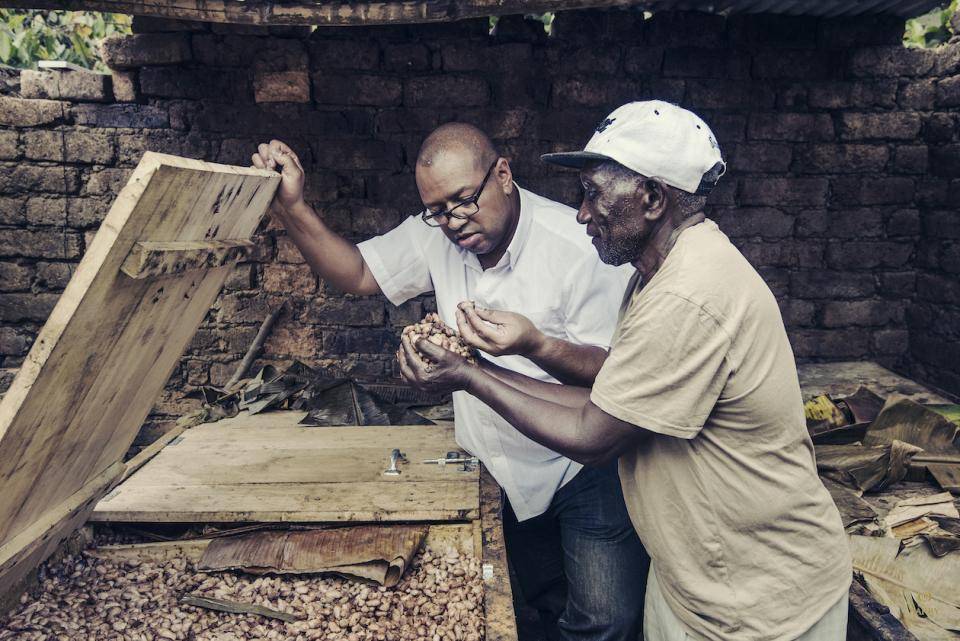
Barry Callebaut's 2nd Generation Chocolate
Fermentation is the focus of Barry-Callebaut’s revolutionary 2nd generation chocolate. The patented fermentation process allows farmers to produce cocoa beans with no defects or off-flavours in significantly less time than conventional fermentation methods. And the cooperatives producing beans using this method are paid a premium for this superior quality cocoa compared to average prices for conventionally fermented cocoa. You can read more about this next-level chocolate and how it benefits farmers here.
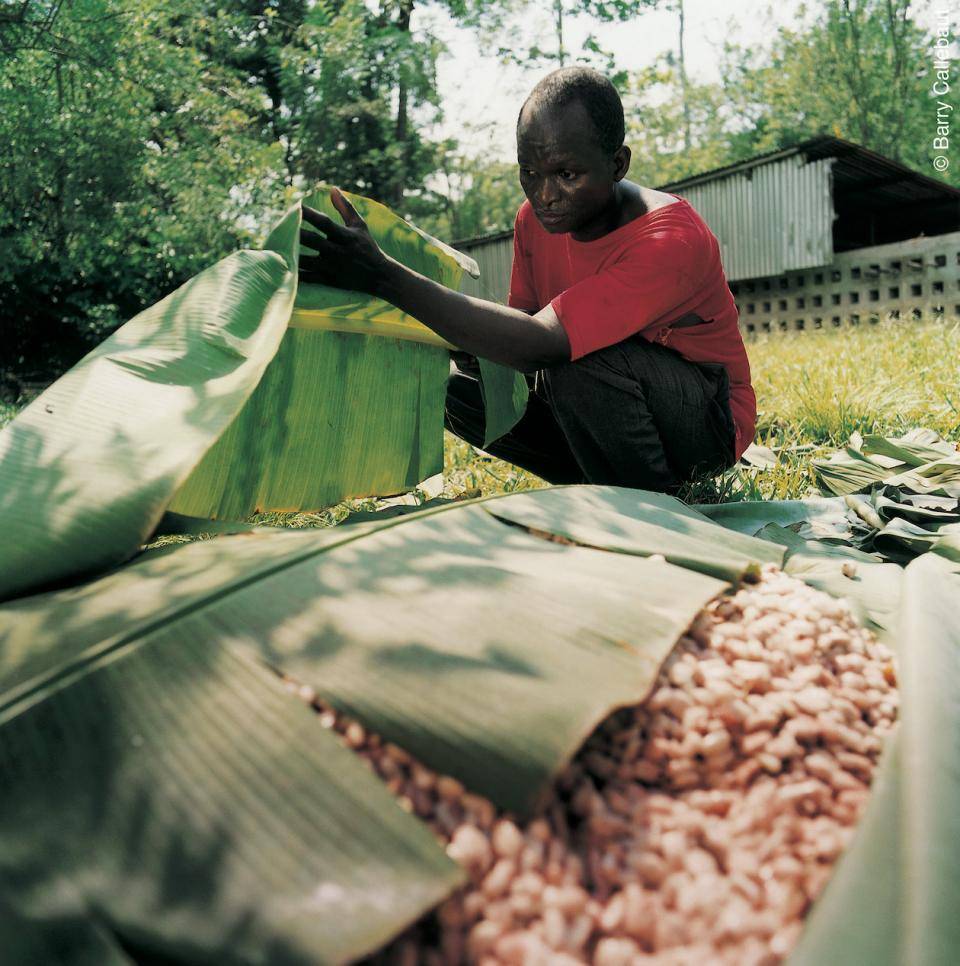
A cacao farmer covers cocoa bean pulp with banana leaves as the first step of fermentation
Cacao Barry's Q Fermentation
Knowing what a crucial step fermentation is in the development of the quality, flavours and aromas in chocolate, Cacao Barry developed a proprietary fermentation process called Q Fermentation. They discovered that specific ferments naturally present in the plant leaves and surrounding soil had the best impact on fermentation and yielded couvertures with pure and intense cocoa flavour. You can experience the results first-hand in the Pureté range.
Products from the Pureté Range
Recipes to Inspire You!
* 'From Cocoa to Chocolate' - Barry Callebaut
** 'Fermentation of Cocoa Beans' by Romel E. Guzmán-Alvarez and José G. Márquez-Ramos



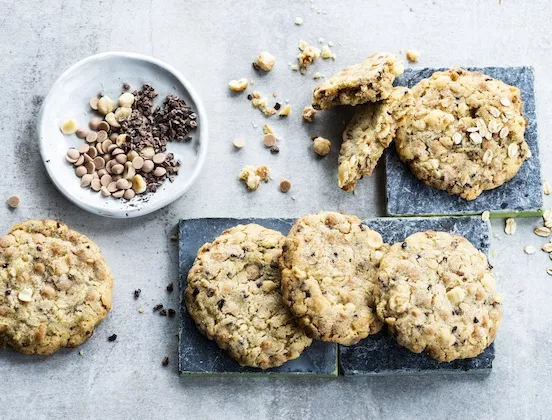
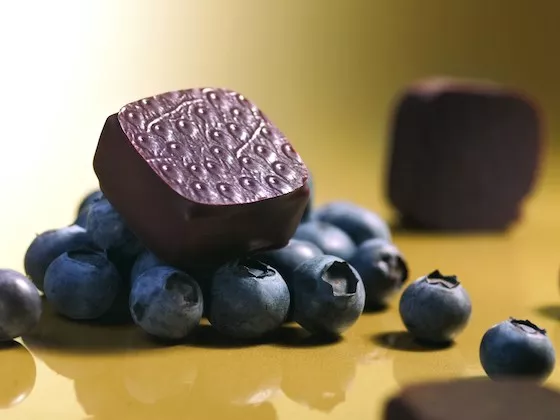
Comments